In a fifth floor room of the UNC Children’s Hospital, a rectangular tray with a large dome was cleaned and ready to go.
“The top of it is clear so that the kids can see what they’re doing, and it has built in gloves so that they can actually touch things,” said Katie Stoudemire. “We can open it and put things in it, but once we seal it, there’s no air going in or out.”
Stoudemire described the WonderSphere – her latest invention to connect hospital patients with nature.

The WonderSphere. Photo via Erin Wygant.
“Kids who have compromised immune systems can’t be around plants and natural objects because, while they wouldn’t make me sick, they would make kids with compromised immune systems sick.”
Stoudemire is the program manager for Wonder Connection, a program of the North Carolina Botanical Garden that provides nature and science activities for kids in the hospital. She noticed that children undergoing chemotherapy and other treatments that weaken the immune system must stay in controlled environments – children like 13-year-old Rachel Rivera Nunez.
“She’s not able to be around plants at all and I wanted a way to bring plants in safely for children like her,” Stoudemire said.
The WonderSphere was her solution. Designed by the Bressler Group, the inspiration for the air-tight dome came from neo-natal ICU beds, complete with sealed rubber gloves. This design helps patients safely pursue their passions and explore new activities – like making flower arrangements.
“Rachel is a kid that I’ve worked with before and she really loves crafts,” Stoudemire said. “She was telling me that she really loves to make things, so I asked her if she wanted to make an arrangement and she told me she wanted to make one for her mom.”
Stoudemire placed a bouquet of flowers and a few vases under the dome, sealed it tight and wheeled it into Nunez’s room.
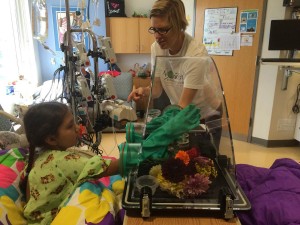
Nunez and Stoudemire working to construct a bouquet of flowers inside the WonderSphere. Photo via Erin Wygant.
“That is a marigold,” Stoudemire explained to Nunez. “Have you heard of that? And all these flowers came from a farm in Hillsborough and we went over yesterday to pick up these flowers for you.”
Nunez was quiet as she slipped her hands into the protective green gloves and began arranging the flowers into a vase for her mother. She smiled softly as Stoudemire introduced her to two small insects inside the sphere.
“In here, in this corner, we have two caterpillars. You see them? Oh no, caterpillars overboard!”
After she arranged the flowers just right, Nunez used an iPad to photograph her work. Since she can’t keep the actual bouquets in her room, she said she’ll keep the pictures instead.
“I love this activity because it gives so many option and choices to kids or anybody in the hospital who don’t get a lot of choices when they’re here,” Stoudemire said. “Giving back just a tiny sense of control can be really empowering for kids.”
As Nunez edited the photos she took, Stoudemire commented on the activity’s success.
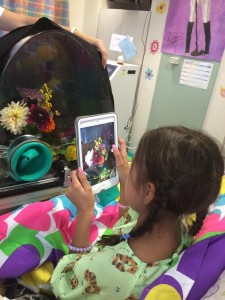
Nunez used an iPad app to save a picture of her flowers. Photo via Erin Wygant.
“It’s really great that we were able to bring actual, live plants that were grown locally into her room and let her interact with them and make choices with them.”
Wonder Connection and the WonderSphere are supported by science education grants and other donations that help the program incorporate as many types of outdoor education as possible.
“I think of us as facilitators and mentors rather than a lecturer,” Stoudemire said. “We’re there to help kids reconnect with nature and get excited about nature.”
But outdoor education doesn’t just end with the WonderSphere. Stoudemire’s next project will bring a working replica of a North Carolina stream into the hospital. Movable river rocks, water bugs and highly filtered water will make the experience safe for patients, Stoudemire said, and help them remember the days when they weren’t in a hospital bed.
“If we can help them reconnect to that positive memory, then they’re having a positive experience during this tough time and they can take away a positive experience.”
Stoudemire said that positive experience was summed up by one child.
“My favorite Wonder Sphere quote from a child was, ‘This is better than an iPad!’”

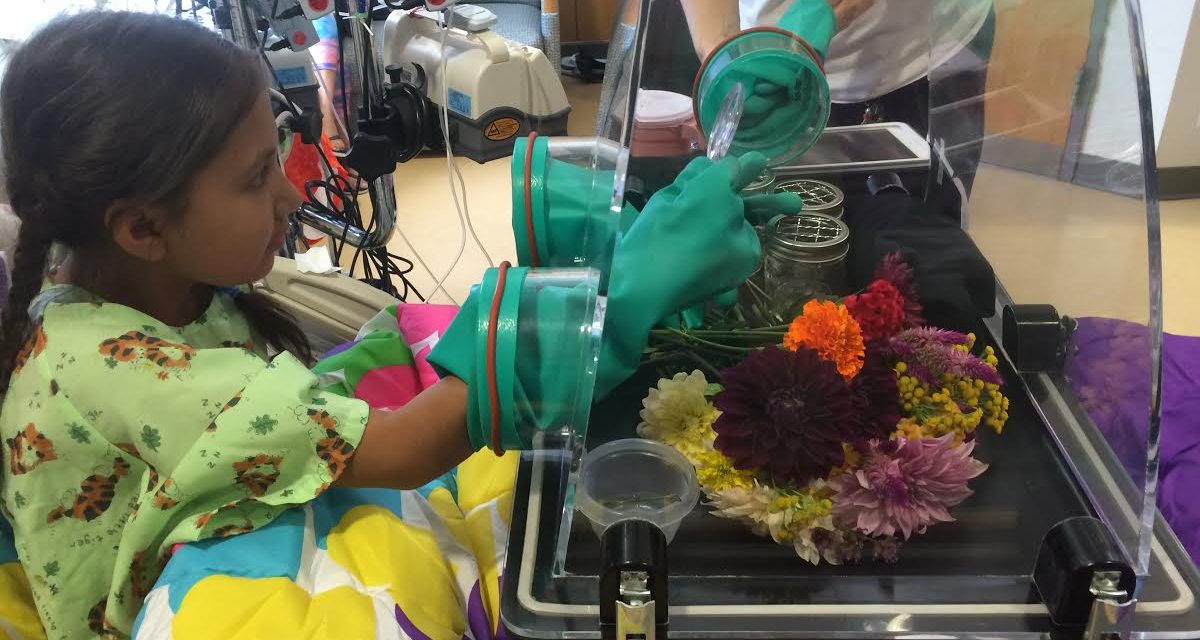
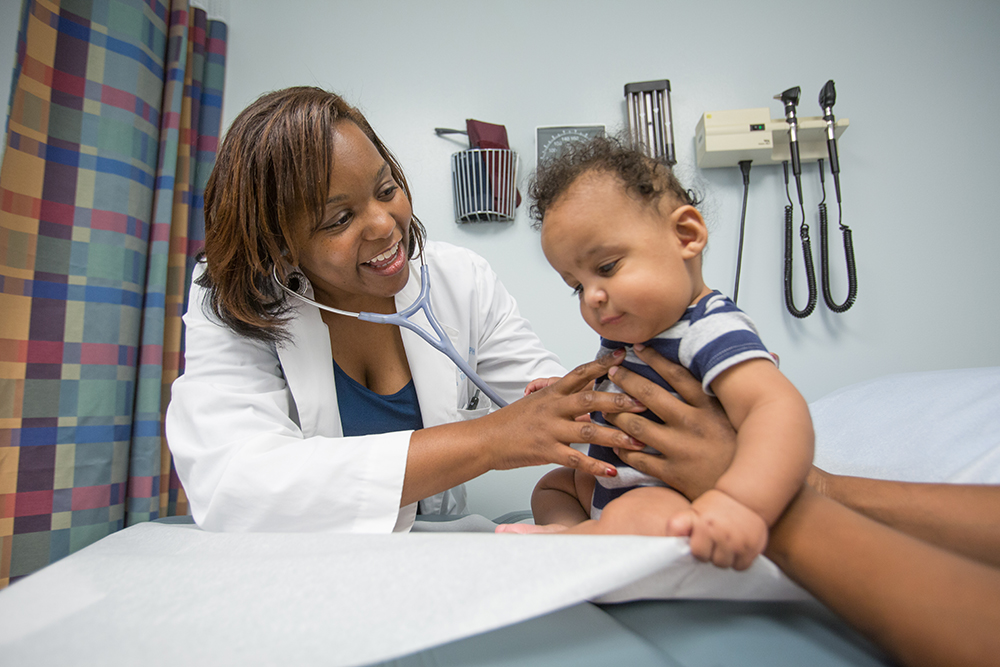
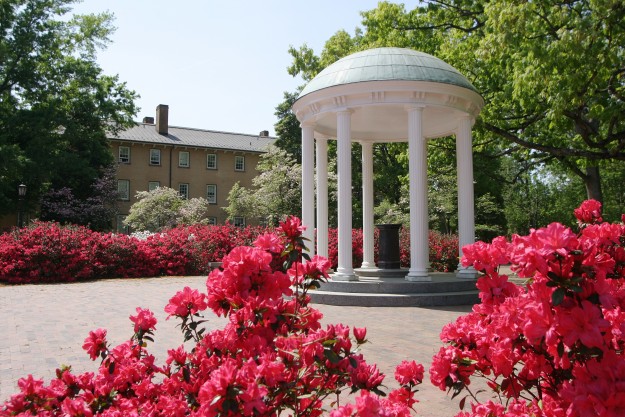
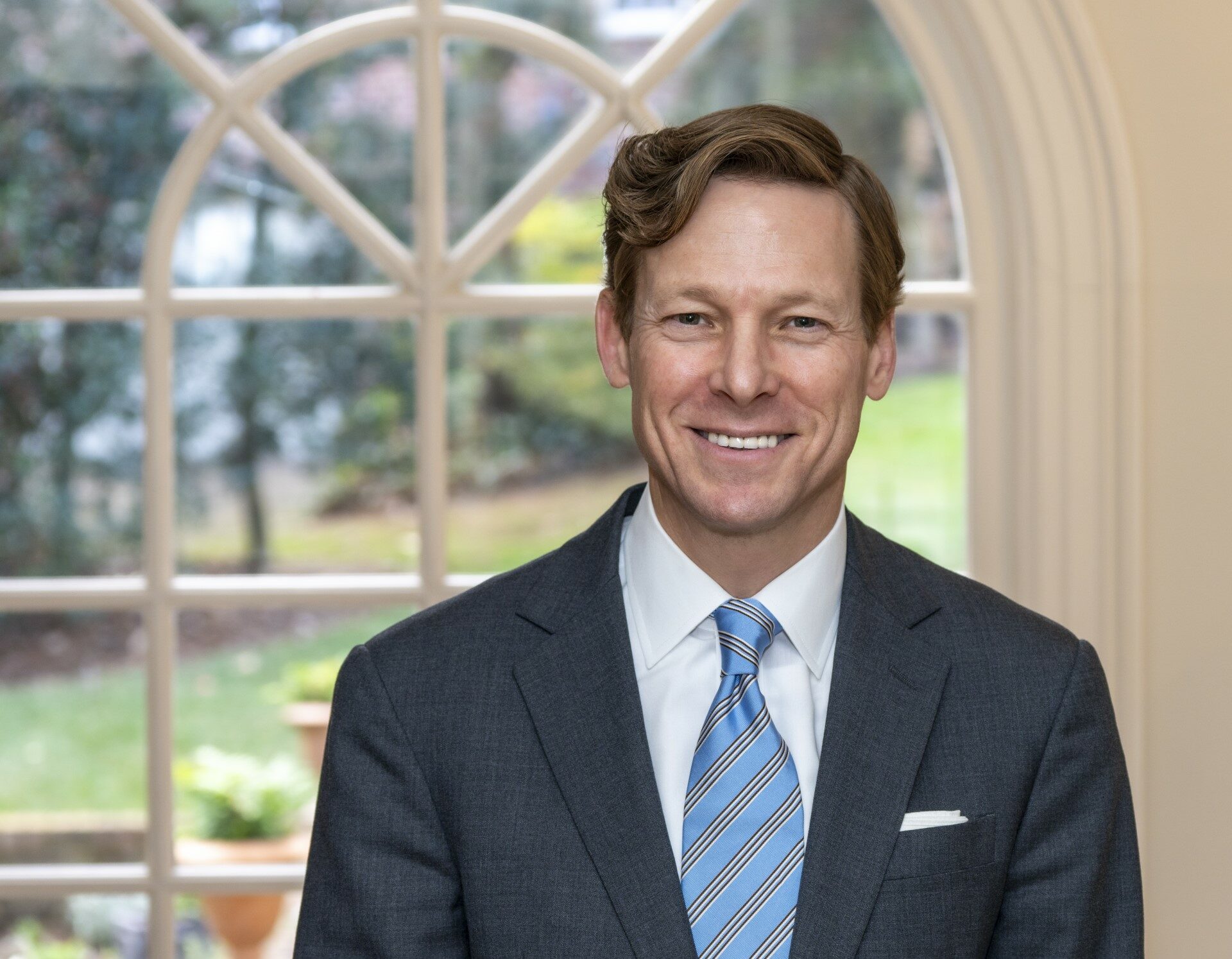
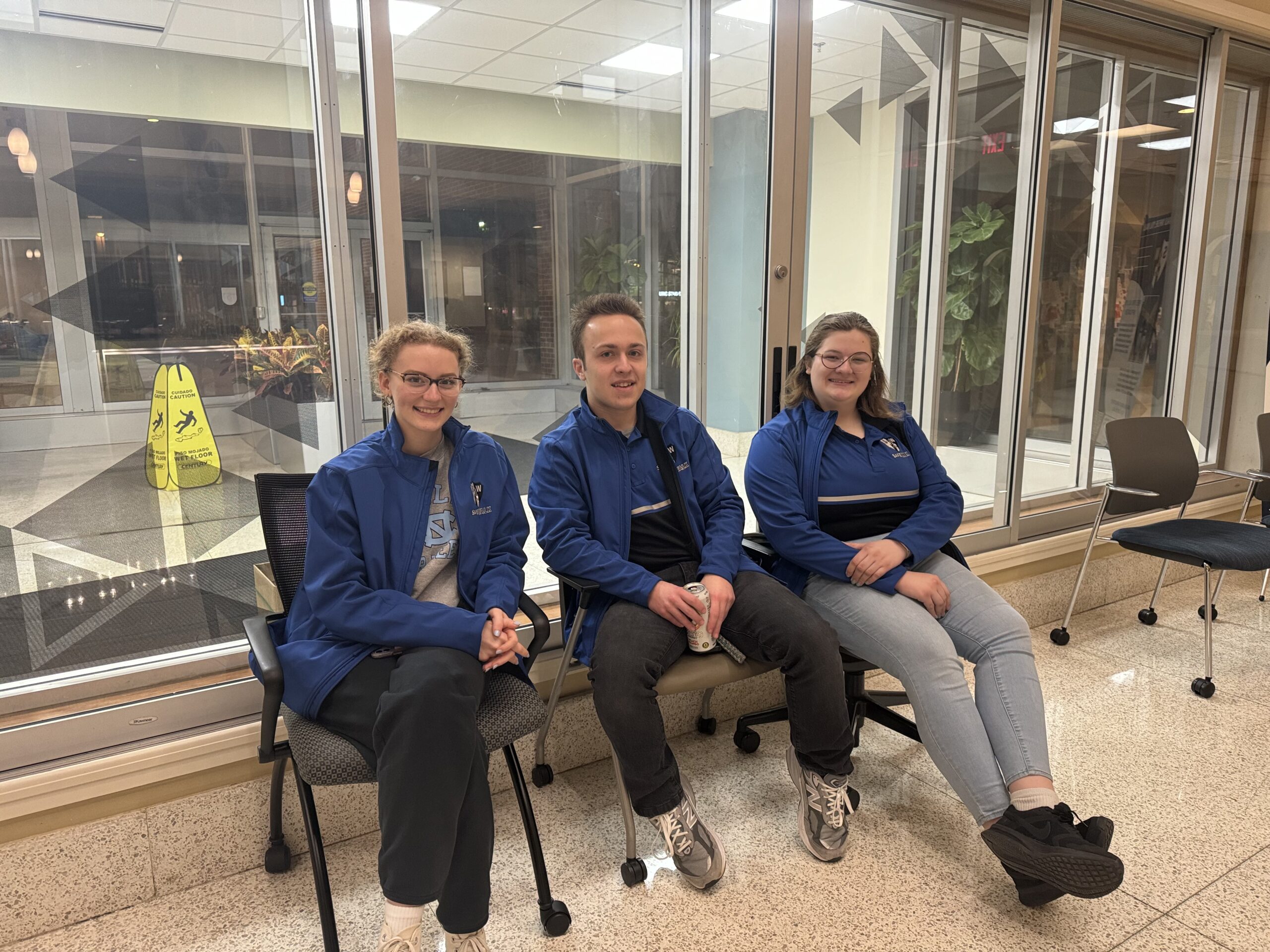

Comments on Chapelboro are moderated according to our Community Guidelines